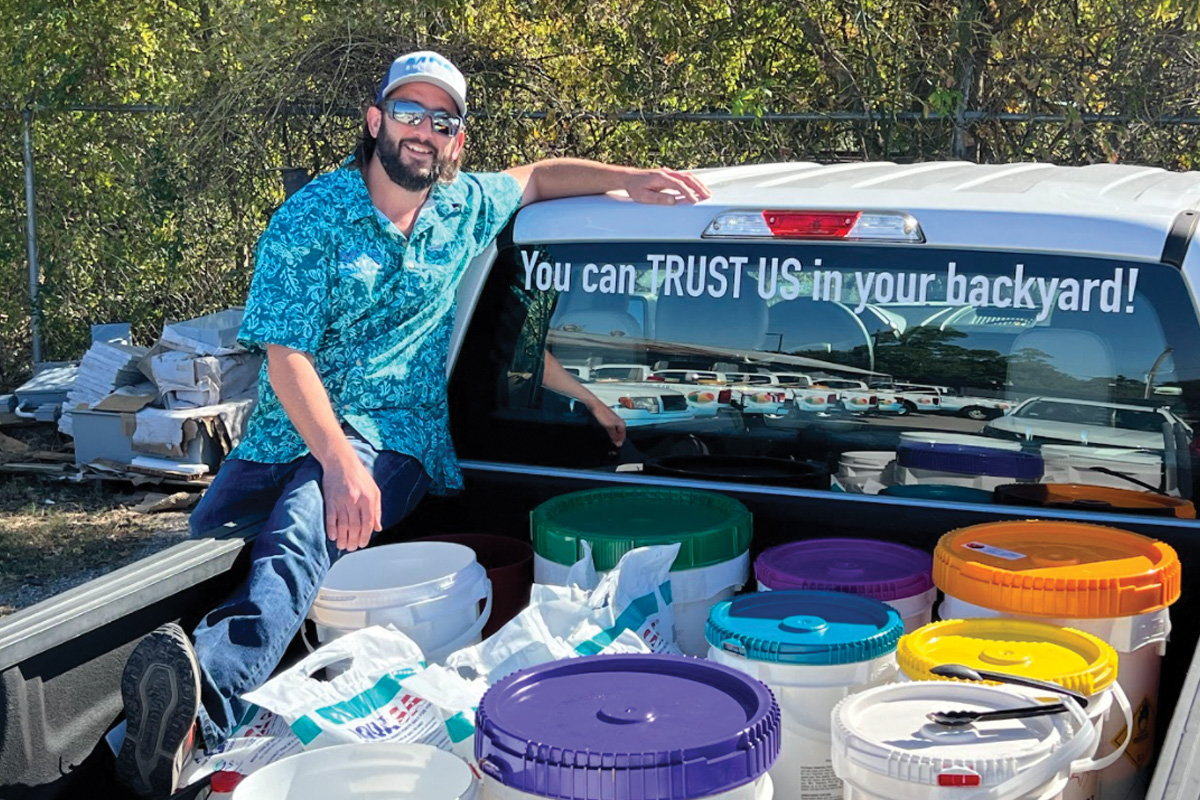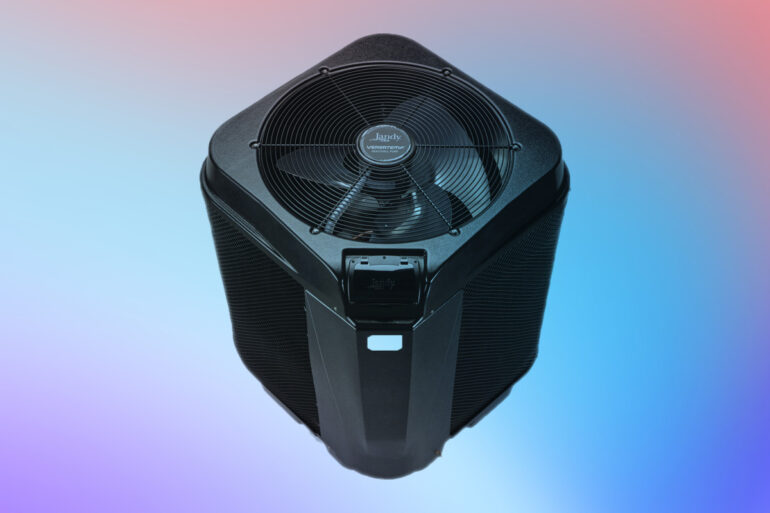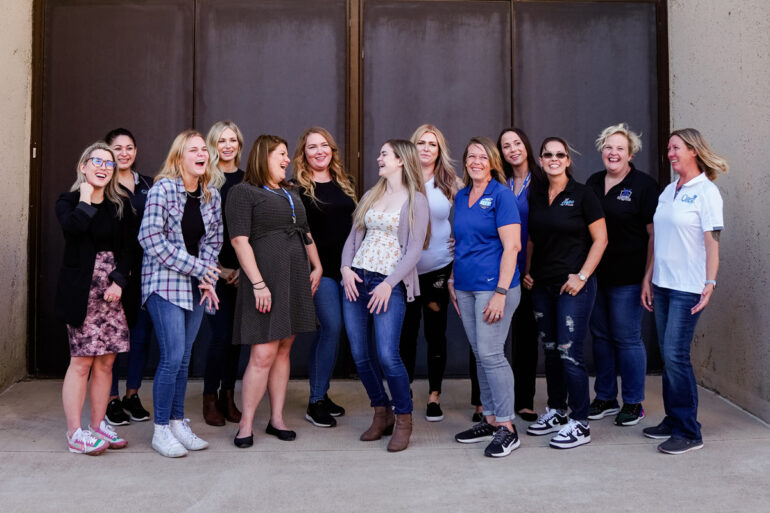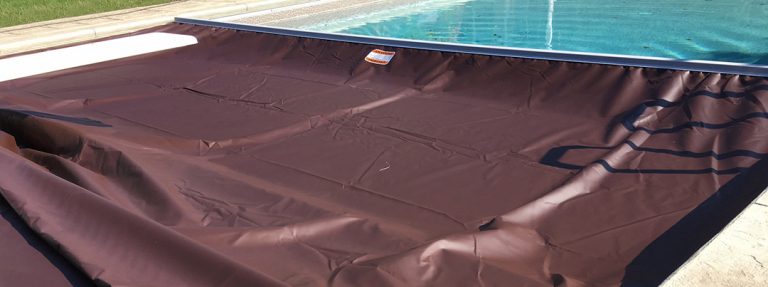Service Truck Tetris

The goal for reconfiguring how Manning Pool Service in Houston, Texas, loaded and organized its service trucks was three-fold: maximize efficiency, safety and vehicle longevity.
The project, now called the Manning Pool Service Truck Planogram, began in spring 2021 when managers were discussing how the service trucks’ branded wraps looked great, but the inside of the cab and beds told a different story.
“Aesthetics are everything,” says Alan Wiles, the company’s maintenance and customer service/sales manager, who put the program together. “We wanted the bed of the truck to look as great as the wraps, and we wanted to make it easier for new technicians to find things.”
With a mechanical background and love for math and chemistry, combined with seven years in the pool industry — and a self-professed enthusiasm for order — Wiles got to work.
He measured buckets and lids. He looked at the types of truck beds in the fleet. Filling a rectangle with circles requires some out-of-box thinking, so Wiles bypassed working around wheel-well spaces and simply worked with a rectangle, using empty buckets as spacers to prevent sliding.
Wiles made note of what service technicians use first, use most often and where these items should be placed in the truck.
“I thought about how to make a new technician’s trip to a customer’s backyard as efficient as possible,” he says. “Time is everything. The more trips to your truck, the more money you’re spending.”
The most frequently used items — like a chemical test kit, designated bucket with acid and a measuring cup, or a net brush — should be on the driver’s side of the truck bed to reduce the number of trips walking around or back and forth from the truck, Wiles says. Shock tabs would go on the passenger side, since the technician would be approaching that side of the truck after testing the water.
“It may seem minute,” Wiles says, “but any wasted steps are wasted energy.”
In addition to considering how to keep shock and acid separated for safety reasons (it was decided that soda ash is the best separator), he also had to consider weight distribution and how the physics of the payload on the trucks impacts truck maintenance. Because Houston pools need a lot of salt when being serviced, each truck carries about six bags at a time. With salt being the heaviest component, Wiles’ design puts that 300 pounds over the rear axle.
Diatomaceous earth was positioned toward the back of the truck bed with spacers and gear for ease of access.
Wiles made a diagram to scale — “I want to be as precise as possible,” he says — of the service trucks’ tools, buckets, chemicals and equipment, working from the front of the bed to the back, with items color coded based on chemical type.
The pen-to-paper process took about six hours, and he brought his plans to the next management meeting.
Wiles says the program was greenlit immediately, but some technicians were resistant to change. After a couple weeks, Wiles says technicians began to realize they were previously working harder, not smarter, and it only took about a month for everyone to get fully on board.
Manning Pool Service used the new system through summer and fall last year, and Wiles says he’s seen only positives, including an unintended but beneficial reduction in labor costs due to fewer overtime hours, which the company says is owing to the truck bed redesign.
The trucks are in better shape, too. “Every time we take our vehicles to get serviced now, wear and tear on the tires is less than it has been in the past,” Wiles says, adding that none of the trucks “squat funky” now that weight distribution is applied consistently to the 30-strong fleet. While he doesn’t have a business plan in place for his program, Wiles is willing to share his design. “The beautiful thing about the industry is everybody contributes in helping for the greater good,” he says, “so I wouldn’t mind helping my fellow cohorts as far as practicing a safe way to store and maintain very, very potentially dangerous and hazardous chemicals in the back of your truck.”






